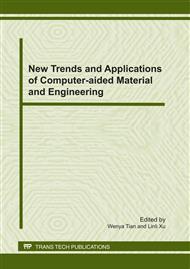p.454
p.459
p.464
p.469
p.474
p.479
p.484
p.489
p.494
Hypergraph-Based User Preference Drift Recognition in Contextual Recommendation
Abstract:
The knowledge of preference drift is important to maintain the user’s preference accurate. With the swift development of mobile service the recognition of such knowledge has attracted immense attention in recent times. However, existing research based on clustering is inadequate for the description of item objects with weak N-ary associations. This paper, through the analysis of contextual recommendation, proposes a “hypergraph model” for contextual items. Furthermore, similarities between pair of items, item clusters and the degree of user preference drift are defined. Based on above definitions, a method to discover user preference drift is proposed. In addition two experiments are being carried out to validate its significance.
Info:
Periodical:
Pages:
474-478
Citation:
Online since:
January 2011
Authors:
Price:
Сopyright:
© 2011 Trans Tech Publications Ltd. All Rights Reserved
Share:
Citation:


